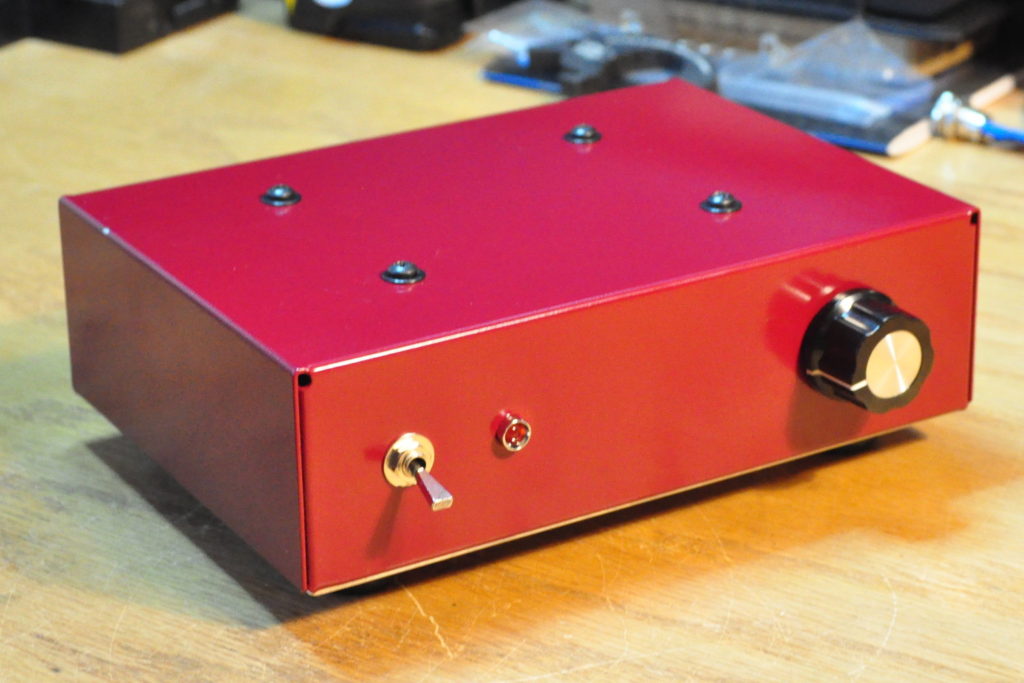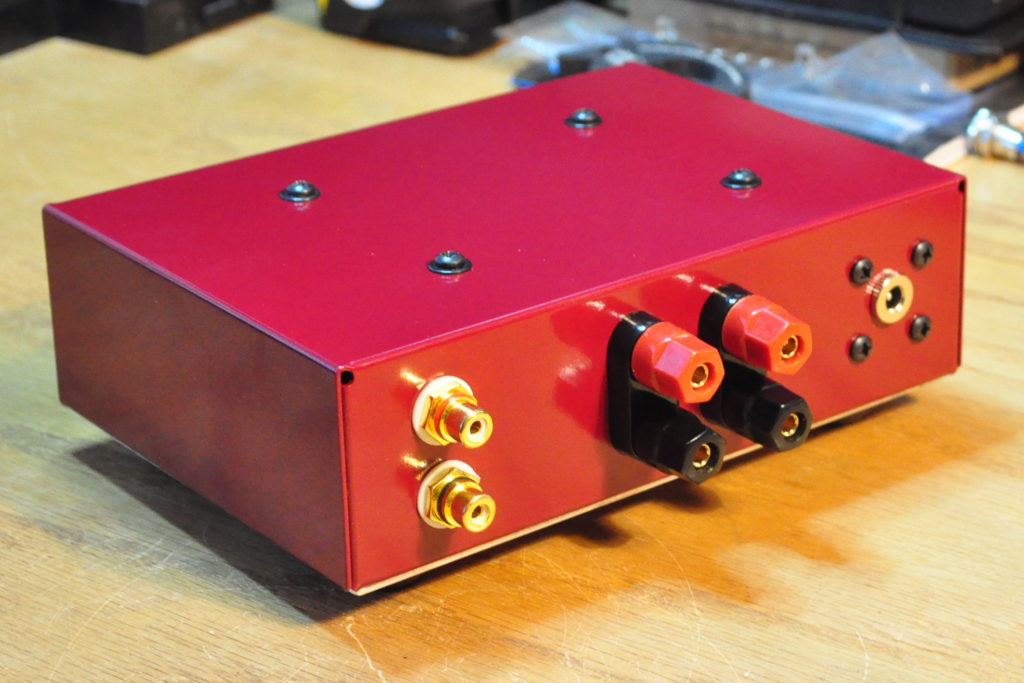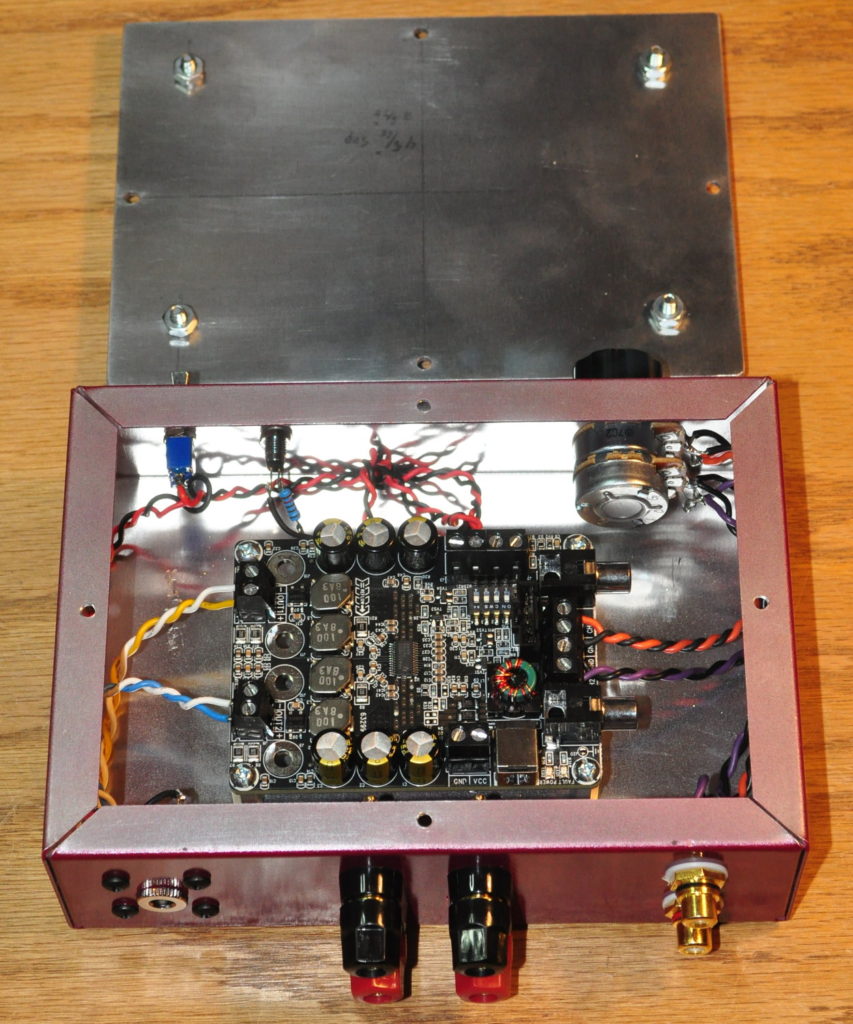I have been working on the new SET chassis design but that’s not all I’ve been doing. This morning I got a little surprise when I checked on my sump pump under the house. It’s starting the rainy season here and I wanted to make sure everything was ready to go. Unfortunately, I found myself replacing a GFCI outlet and the sump pump that had failed and taken the outlet with it. Since the morning was shot, I decided to finish up a couple of other little projects this afternoon. Last week I mentioned another project, the portable class D amp. We’ll, I took a little time this afternoon to finish off that one.
I got the box painted earlier this week and the paint had finally set up. So I took some time to wire up the various connections and finish the project. Here’s how it looks.
The front…

The back…
And, of course, the internals…
These little amplifier modules still amaze me. This is a self contained, class D, 15W per channel amplifier, in a complete package for less than $30 USD. When I think back to all the machinations I went through 40 years ago to get a self contained amplifier like this, I just shake my head. I know that on the website here I spend almost all my time on vacuum tubes, but modern technology and manufacturing is really quite amazing.
Now that that’s done, there is nothing that should distract me from my tube projects. Time to get back to that SET chassis design.



Pingback: The 12AU7 “Color” Preamp is Complete | Cascade Tubes
Your finished product is very similar to the small discrete transistor amps I have built.
Main difference is that I typically use black plastic Hammond boxes as the enclosures.
One question – what supply voltage do you use with the amp board?
Usually 12v. This particular module is rated for an input voltage of 10v to 24v.
I have found that the little 12v high efficiency switching supplies made for strings of LED lights work really well for these amplifier modules. Like this one here. The little 2x8W module I used in my woodshop is rated for 9v to 19v so again, the 12v supply works fine.
The box is a BUD AC-402 aluminum box. I picked up a bunch of these and some larger AC-403 enclosures for nothing about 10 years ago. So I’m slowly working thorough my stash of these boxes as projects require them. I use them for projects like the test jig I made here.
Yep, gotta love them wall warts and bricks! Low cost safe UL listed low voltage power ready to go.